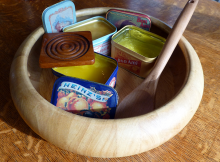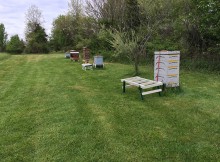In Episode 90 I mentioned making some past waxes out of bees waxes and various oils. I thought I’d share some photos of some of the items that I polished/treated but unfortunately my before and after photos went south with a bad memory card. I did get a shot of my before and after boots.
Pastes and a few items polished
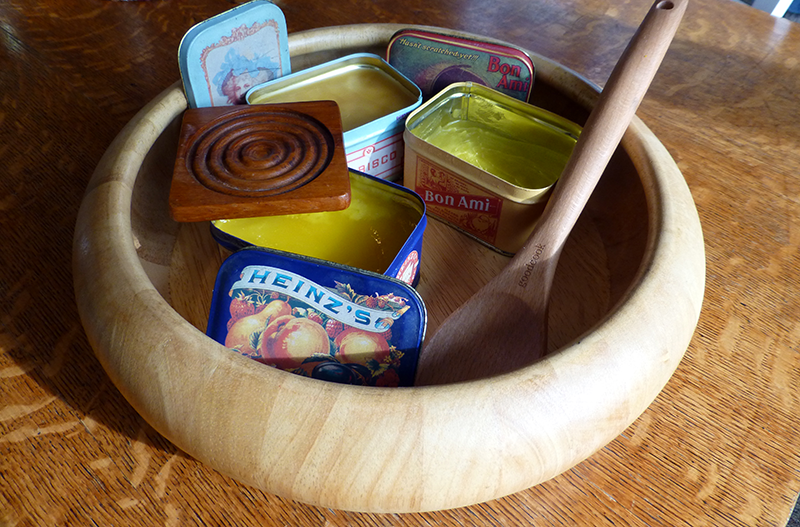
My Workboots
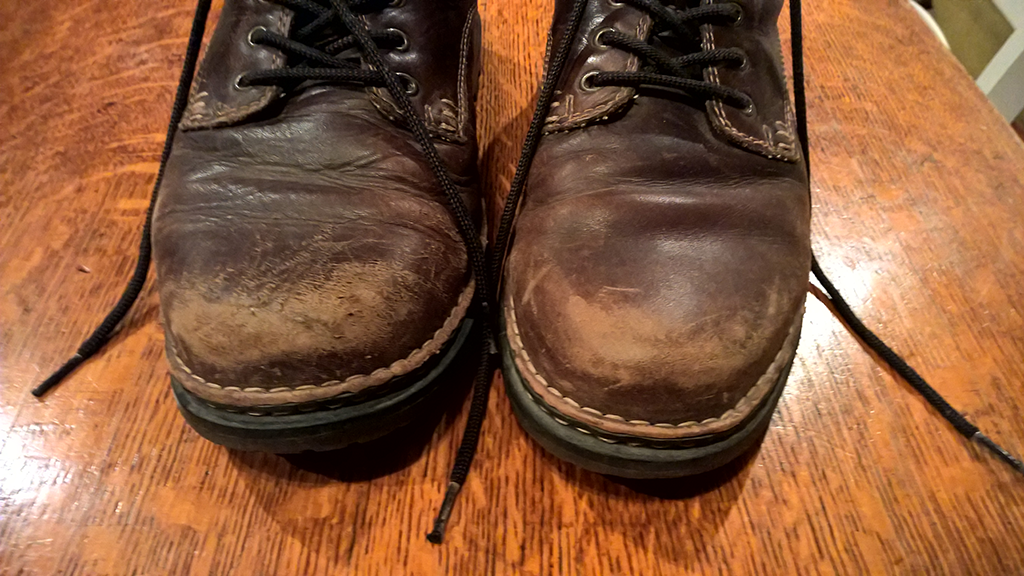
With a little polish
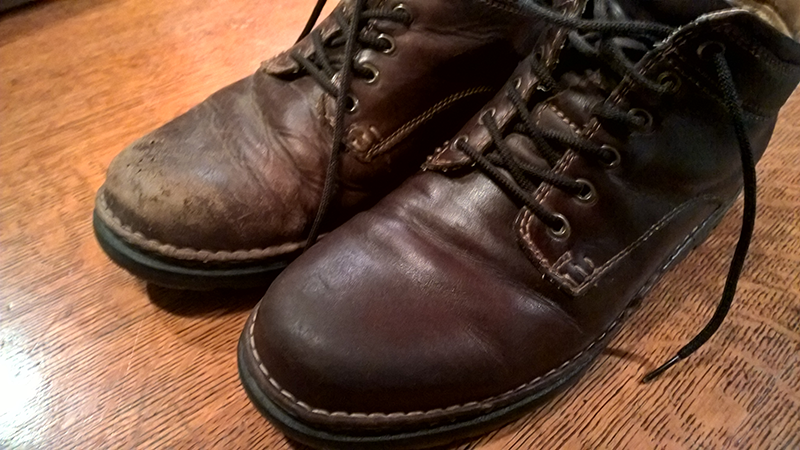
There are three pastes, Beeswax and Olive Oil, Beeswax and Mineral Oil, and Beeswax and Boiled Linseed Oil.
It’s been a fun project and so easy to do. Listen to episode 90 for additional details on making the paste.
I made three paste formulas. One using wax and olive oil, one using wax and boiled linseed oil, and one using wax and mineral oil. My goal was to use the olive oil one to coat food product utensils, restoring cutting boards, wooden spoons, wooden drink coasters and the like. Linseed oil for leather, and mineral oil and olive oil for skin creams. One thing about mineral oil, some people don’t like this notion because it is petroleum based. I’m not sure what the fuss is because Johnson’s Baby Oil is mineral oil with fragrance. Truth be told, that’s what I used for my oil.
The linseed oil and olive oil mixtures resulted in a firm paste. The mineral oil one resulted in a loose gel similar to the consistency of softened butter. The olive oil one is a shiny and glossy while the linseed oil is matte. Both of those products are soft enough that you can take a t-shirt cloth material and rub off enough paste to transfer to your target product.
One word about linseed oil. It is made from squeezing flax seed. Conventionally you can buy it in raw or boiled form. For this purpose choose the boiled linseed oil variant as it dries faster and is the one that you’ll want to use. Raw linseed oil is known to have a very slow drying time. If you are doing something outside and you want it to last, maybe you consider raw so it stay present longer, but for most DIY projects you’ll want to use the Boiled variant. Do note when you use this though it has a certain odor to it and you’ll want to take that into consideration. The mineral oil and olive oil blends in my experience are more neutral.
I polished our mahogany kitchen table and the kitchen chairs. I did another wooden table on our porch. I’ve polished wooden coasters, all of our wooden spoons, salad bowls, well you get the picture. One of the things I really enjoyed was treating the old pair of boots that I have (in the photo above).
I really like these boots and had forgone wearing them because they were worn and shabby looking. As you can see they came out great; so good in fact that I wore them to work on casual Friday and got a comment about how nice they were.
What I’ve explained is akin to the starter kit for wax pastes. If you research on the web you can find much more sophisticated formulas that use other mix ins for various properties. The leather I treated was fairly clean. You can treat leather by buying leather cleaner or add stuff into your paste, like mineral spirits, ammonia, alcohol, or other distillates that help the process along. You can add almond butter in order to replace lost natural oils in the leather. You can add castor oil to provide a certain shine or sheen if you will. Coconut Oil is another additive that I’ve seen. You can also add propolis to mixtures for a waterproofing aspect. I can tell you there are no shortage of DIY recipes for use of beeswax based creams and pastes and one of the more interesting ones was on Reddit which seems to have a micro culture on just about any topic known to mankind.
Recipe:
4 Tablespoons Oil (Linseed, Mineral, or Olive Oil),
1 Tablespoon Beeswax
- Melt both the oil and beeswax into a liquid state over a double boiler set on low heat.
- Transfer to a container and allow to cool.
Notes:
Use a small square of wax paper or parchment paper, pressed down on the linseed oil variation to keep it from forming a skin. If you do not choose to do this, it will likely skin over. If the event that it does skin over, simply pull back the skin and use the soft paste underneath.
Always smell the product to ensure the oil component has not turned rancid.
Stored in a cool dark place, these should last in the containers for years.







